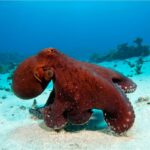Welcome to the World of Animals and much more! We travel the world in search of fascinating creatures and cultures in some of the most spectacular places in the world. Join us as we explore the world!
Cruise News
Follow along on our journeys as we travel around the world as guest speakers.

Viking World Cruise – Viking Sky 2023/24
Resource Page
The resource page has some of the key pieces of information that I mention in many of my lectures.

Download Your Own Free Copy of Fun Animal Facts
This little e-booklet is loaded with amazing fun animal facts.
Great for sharing with kids and grandkids!
Download here
For example, did you know that the barrel eye fish has a transparent head?! It can look upwards through its transparent skull. The barrel eye fish has a 360-degree field of vision without moving its body. Better than having eyes in the back of your head!
Read George’s book on the Amazing Octopus –
“The Octopus Paradox: 9 Brains, 3 Hearts, and 8 Arms Make for a Fascinating Creature” Learn how octopuses make nine brains work as one!
Dive into the mesmerizing world of octopuses with this captivating book! Explore their incredible abilities, from problem-solving to tool usage. Discover the intriguing behaviors that hint at their possible consciousness. Immerse yourself in a journey that unveils the mysteries of these fascinating creatures. Get ready to be amazed and gain a whole new appreciation for the extraordinary octopus.
Share Your Memories – the Easy Way!
Learn how easy it is to create your own free eBook to share your travel adventures and photos with family and friends. Download my FREE eBook written from personal experience as a world traveler and cruise ship lecturer for over 17 years.
Viking World Cruise 2024
Hi Friends, thank you for visiting! It is my great pleasure to join you for this exciting segment of the Viking Sky World Cruise from Asia to Africa and around the Cape to Lisbon, where we will disembark. I am one of your guest speakers on board and my focus is on the Natural Sciences.…
7 Most Scenic Romantic Spots in Bali: Love Amid Nature’s Beauty
Bali is a paradise for couples looking to immerse themselves in breathtaking scenery and serene natural spots. Discover the magic of Bali’s most picturesque locations that blend romance with stunning vistas. Whether you’re captivated by the fiery hues of a sunset at Uluwatu Temple or enchanted by the lush greenery of Tegallalang Rice Terraces, Bali…
10 Amazing Facts About the Secretary Bird: Stilt-Walker of the African Savanna
The Stilt-Walking Secretary Birds of Africa In the open African plains, there’s a bird so unique that it could have sprung from the pages of an explorer’s wildest journal. The secretary bird, with its long legs and quill-like feathers upon its head, is a sight to behold. It’s a bird that wears its name like…
How do we Inspire Young People? Using Fun Facts to Engage Young Minds
How do we inspire the Young People in our lives? I’ve been reflecting on this as we come towards the end of our time on the Viking World Cruise. Our lives have been filled with so many awesome experiences, stories and photos! What are the messages we want to convey to our friends and family?…
How Smart Is a Crow: Unveiling Avian Intelligence
The Intelligence of a Crow Crows possess a remarkable level of intelligence that is evident in their behavior and social interactions. Their cognitive skills are on display when they encounter obstacles; they use a variety of strategies to navigate these challenges. For instance, they are known to select sticks as tools to retrieve insects from…
Deep Sea Dragon Fish: 12 Fascinating Facts and Best Kept Secrets
Diet and Hunting Deep-sea dragonfish have a diverse diet, primarily focusing on smaller marine life such as crustaceans and various types of fish. Their unique hunting techniques allow them to effectively find and capture prey in the challenging deep-sea environment. You may find it interesting to know that the deep-sea dragonfish possess specialized adaptations for…
Elephant Trunks: 10 Incredible Facts and Secrets Uncovered
Anatomy of Elephant Trunks The elephant trunk, an incredible fusion of the upper lip and nose, is a testament to the extraordinary adaptations found in these majestic animals. The anatomy of an elephant trunk, which lacks any bones or cartilage, consists of a muscular hydrostat, a powerful arrangement of muscles that makes it extremely flexible…
Why Did Giraffes Evolve Long Necks? Discover the Latest Science
There is still some debate about why giraffes have long necks. The accepted theory has been that long necks evolved as as an adaptation to feeding in tall trees and to help giraffes spot predators. Another idea is gaining support; it is called the “necks-for-sex” hypothesis, which suggests that a primary driver for the evolution…
How Does an Anaconda Snake Kill Its Prey? Science of Constrictors Explained
In recent years, it has been discovered that boa constrictors, anacondas, and other nonvenomous constrictor snakes kill their prey by inducing cardiac arrest rather than suffocation. This means that the constriction process is quicker and more efficient than previously thought. When these snakes wrap their coils around their prey, they apply pressure that essentially stops…
The Blue-Ringed Octopus: A Shy, Venomous Creature That Can Kill You
The Blue-ringed octopus only shows its bright blue rings when it is disturbed and ready to bite in self defense. This small marvel from Australia and the Western Pacific possesses enough venom to kill approximately 30 people, making the toxin 1,000 times more lethal than cyanide. Those who fall victim to its bite may not…
Browse Our Posts – More Fascinating Creatures!
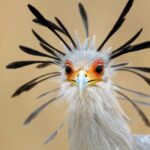
10 Amazing Facts About the Secretary Bird: Stilt-Walker of the African Savanna

12 Cannibal Animal Facts and Surprises! (Is Your Cute Hamster Truly Harmless?)

12 Reasons to Visit Table Mountain, Cape Town – Fun Facts and 360 Photos

360 Camera Travel Tips (How to Get the Best Shots with your 360 Camera)

5 Top Tips for Awesome Travel Presentations (That Will Make You Stand Out!)

7 Most Scenic Romantic Spots in Bali: Love Amid Nature’s Beauty
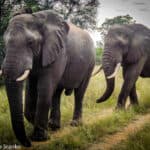
African Elephant Habitat Is No Accident (Essential Role of Elephants in the Ecosystem)
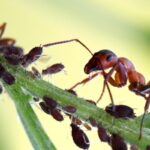
Ants and Aphids: Fascinating Facts and Natural History
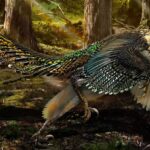
Are Birds Dinosaurs? Latest Science (How Birds Evolved from Dinosaurs)
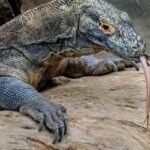
Are Komodo Dragons Dangerous? (Where Can you See Them?)
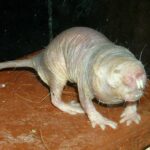
Are Naked Mole Rats Blind? | Weird Facts (Murderous Queens and Deadly Daughters)
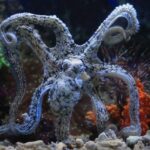
Are Octopuses Classified as Fish? Discover Crucial Differences

Are Wolf Dogs Safe or Dangerous? Do Wolves or Wolf Dogs Make Good Pets?

Best Cruise Destinations for Wildlife in Africa / Madagascar.

Best Cruise Ports for Nature-lovers in Australia and New Zealand (& Komodo Island)

Best Wildlife Watching in Alaska by Cruise Ship

Bird Migration Patterns | How Do Birds Navigate Without Getting Lost?
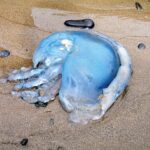
Can Dead Jellyfish Sting? How Do Stinging Cells (Nematocysts) Work? Is Vinegar Effective?
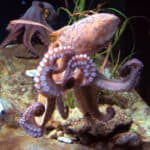
Can Octopus Arms Grow Back? (Are Regenerated Limbs Just as Good?)
